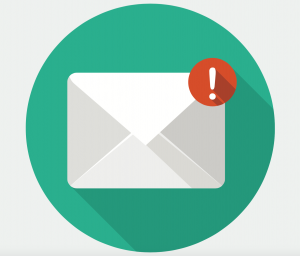Oops! What to Do if Your Email Newsletter Contains An Error
We’re all human. Mistakes happen. Even in your (gulp!) email newsletter.
Fortunately, you CAN take steps to reduce the odds of errors happening (more on this in a moment).
But even with your best efforts, errors can still go undetected. So what do you do when you get the dreaded call, email or tweet: “BTW, the link in your newsletter isn’t working”?
Basically, you need to follow these three steps:
1. Confirm that the Newsletter Has Gone Out
It’s easy for internal staff to get in a panic about an error before realizing that the newsletter hasn’t been distributed to customer lists yet.
If you haven’t pressed send, or if the email status is “scheduled,” you can easily go back and make corrections. Simply un-schedule the newsletter, return to edit mode, make your changes and then reschedule.
But most likely, the newsletter HAS gone out. What do you do then?
2. Assess the Nature and Severity of the Error
How significant is the error? Is it a small typo? A misspelled word? A grammatical mistake?
Or does the error significantly change the meaning of the text? Is it very noticeable, embarrassing or misleading? Does it make your promotion inoperable?
Generally, the more visible or significant the error, the more you should consider taking corrective action.
3. Decide What Action to Take
If the error is a relatively insignificant, you can limit your response to apologizing when anyone brings it to your attention.
@ExampleCo You spelled “apparently” wrong in the last newsletter
– @Customer
@Customer You’re absolutely right. Nice catch. Please accept our apologies.
-@ExampleCo
If you overreact by sending a corrected email to everyone, you run the risk of annoying recipients.
But if the typo is significant, you need to take corrective action. And in that case, you have a few options:
a) Correct and resend the newsletter
If you decide to go this route, change the subject line to indicate that it’s a corrected version. You can do this by adding “Correction:..,” to the start of the subject line.
Also, think about whether to resend the email to the entire list or only to those who opened the original email.
While errors are never good, you can often lessen the impact with a little levity.
Whoops! We were so excited to get our holiday newsletter to you, our fingers went a little crazy on the keyboard.
b) Correct the online archived version of the newsletter
If your newsletters are archived on your company’s website (or the site of your email service provider), you should consider correcting those as well.
The process for doing this may differ depending on your email service provider (ESP). In the case of MailChimp, for example, you have to clone the original email, make the corrections, send the corrected version to yourself, and then use the new “sent” version for your archive.
c) Correct links or images through your ESP (if possible)
And when you’re talking to your ESP, ask them if it’s possible to correct a link or image contained in a newsletter without doing a resend. I haven’t come across this myself, but some online resources indicate that it’s possible with some ESPs.
Take Steps to Prevent Email Newsletter Errors
Of course the best way to deal with email newsletter errors is to prevent them from happening in the first place. Check all links and proofread carefully. Try to not to create and proofread a newsletter on the same day. You’ll be amazed at the errors you’ll find when you look at the copy the following day!
Also, send test newsletters not only to yourself but to others for careful review.
At Copperplate Communications, I always send test email newsletters to my clients for review before scheduling. (I also encourage them to share it with their staff for further proofing.)
For more information on correcting email newsletters after they’ve gone live, check out this Marketing Land article.

